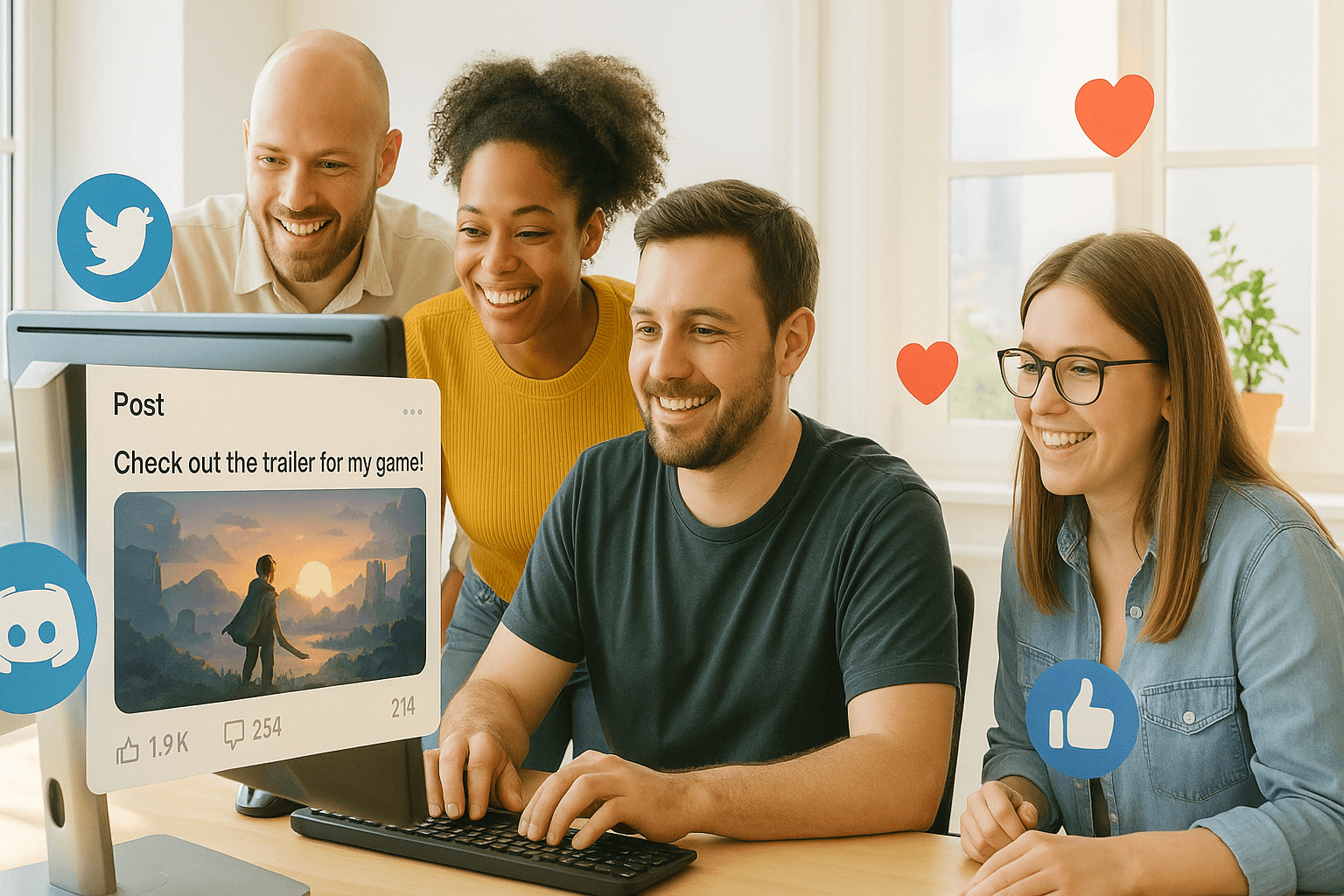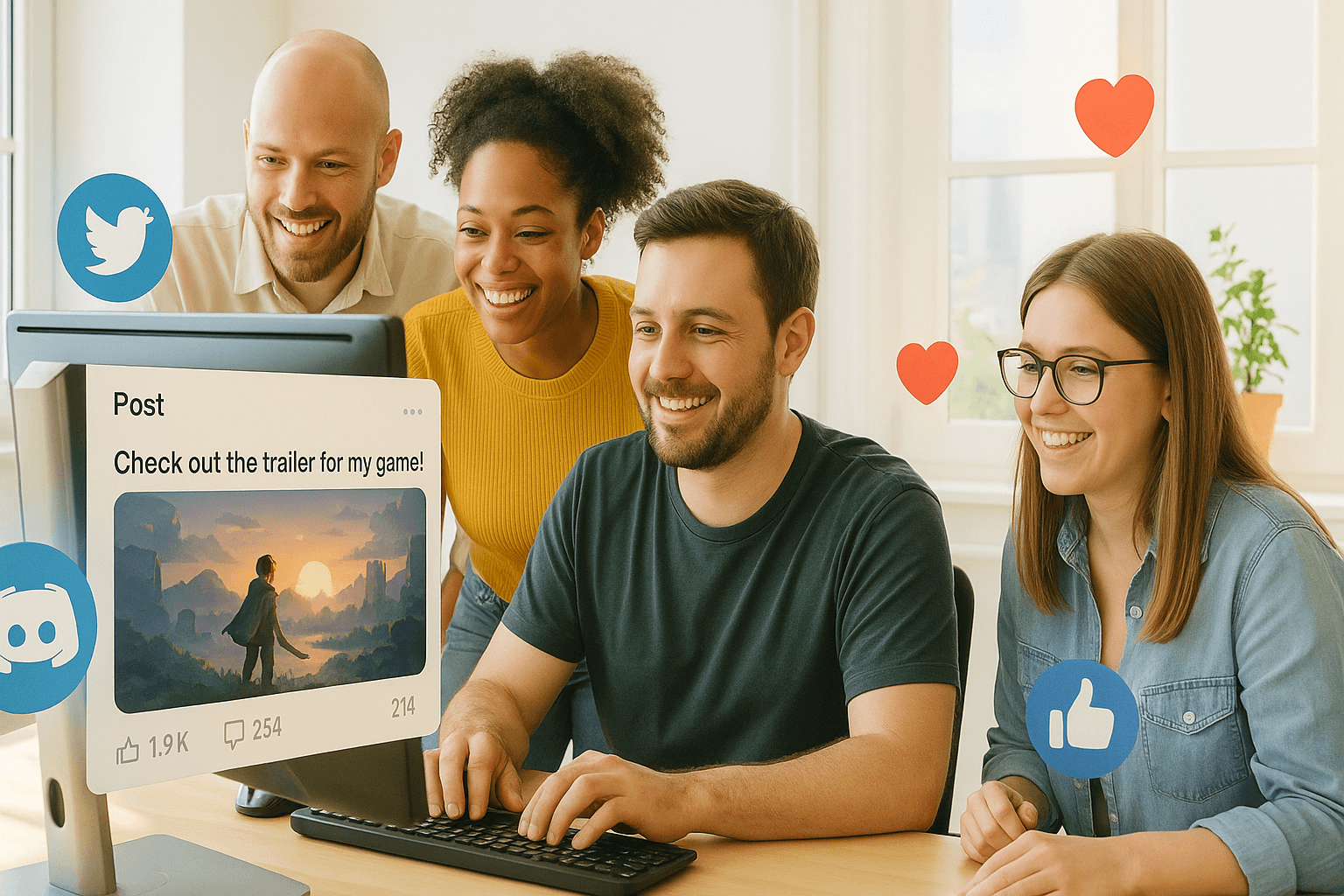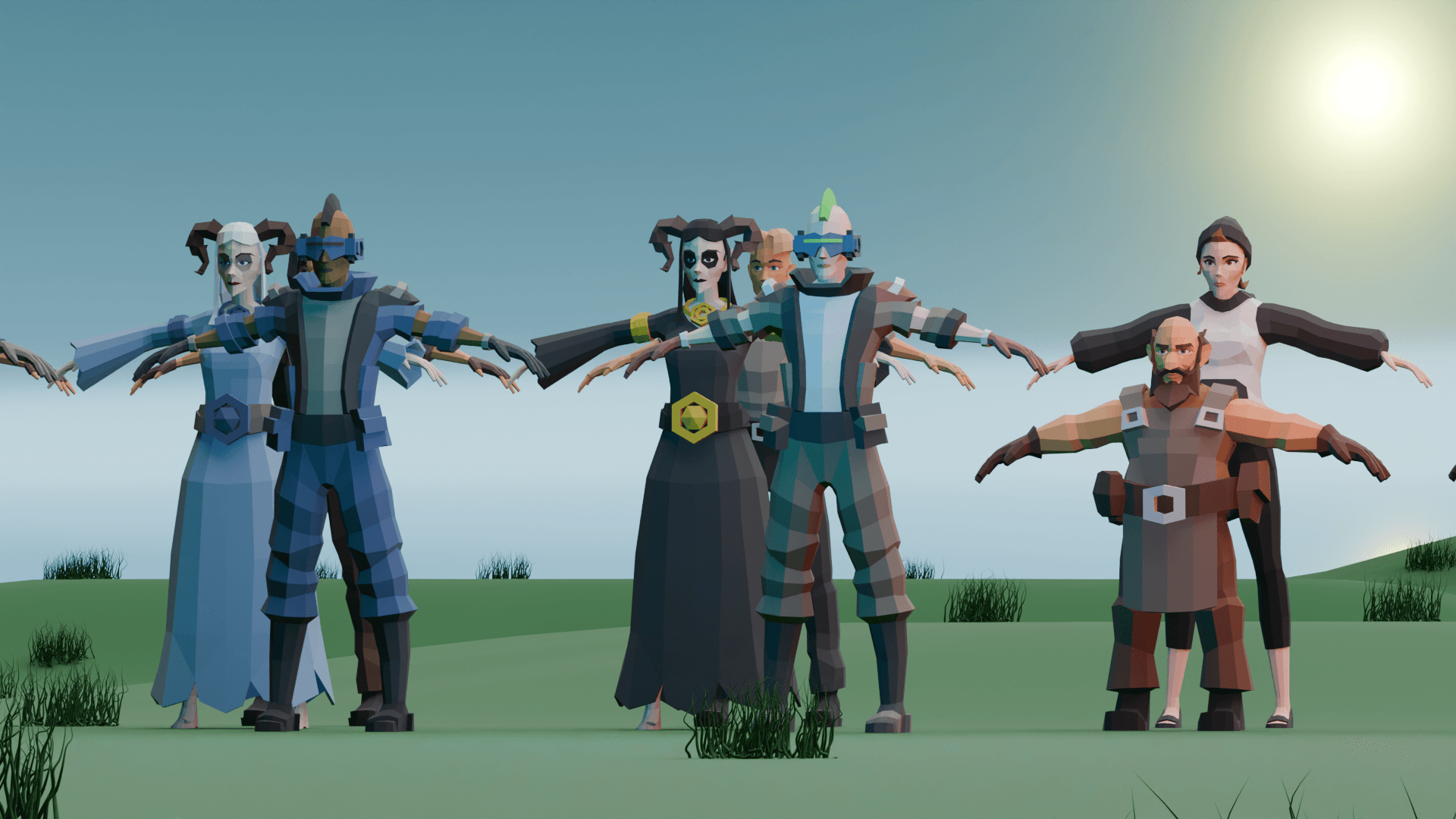
How to Use Social Media to Grow a Game Dev Audience
You’ve got a cool game idea, maybe even a prototype - but how do you get people to actually notice it? That’s where social media comes in. Platforms like X/Twitter, TikTok, and Instagram aren’t just for sharing memes; they’re incredible tools for showing your work, building hype, and connecting with players who care about your project. Let’s break down how to use them to grow your game dev audience the smart way.
In today’s crowded gaming landscape, creating a great game is only half the battle - the other half is getting players to care about it. Social media isn’t just for promotion; it’s a tool for building a community, gathering feedback, and sharing the passion behind your work. Whether you’re a solo developer or a small studio, using social media strategically can help your game stand out long before launch.
Here’s how to use social media effectively to grow your game dev audience.
1. Define Your Game’s Identity Before You Post
Before you start sharing, clarify what makes your game unique.
Ask yourself:
- What emotions should players feel when they see your posts?
- What kind of visual style, tone, and message reflect your game’s personality?
Establishing this identity helps you create consistent, recognizable content. Think of your social media presence as an extension of your game’s world - whether that’s cozy, chaotic, mysterious, or nostalgic.
🎨 Tip: Create a small “style guide” for your posts - color palette, fonts, logo placement, and tone of voice. Consistency builds familiarity.
2. Choose the Right Platforms
Not every platform serves the same purpose. Focus on where your potential players and fellow developers spend their time:
- Twitter/X - Best for #GameDev updates, sharing devlogs, and networking with other developers.
- TikTok - Excellent for short gameplay clips, behind-the-scenes moments, and quick insights into your creative process.
- Instagram - Ideal for showcasing artwork, animations, and concept art.
- YouTube - Perfect for devlogs, trailers, and more in-depth storytelling about your game’s development.
- Discord - Not exactly social media, but a must-have for nurturing community engagement and feedback.
📈 Start small. Focus on one or two platforms where you can post consistently rather than spreading yourself too thin.
3. Show the Process, Not Just the Product
Audiences love seeing how games are made - not just the finished result. Share progress, mistakes, and discoveries. These posts make your journey relatable and engaging.
Ideas that perform well
- Time-lapse clips of art or animation work
- Before and after visuals of level design or lighting
- Short clips demonstrating new mechanics or physics
- Funny bugs or development "fails"
When people see the craft behind the game, they connect more deeply with your story - and they’re more likely to support it.
🧠 Remember: Authenticity beats perfection. Social media rewards honesty and curiosity.

4. Engage With the Community
Social media is social for a reason. Don’t just post - interact.
- Reply to comments and questions.
- Share posts from other developers you admire.
- Join discussions around #IndieDev, #GameDev, or #MadeWithUnity hashtags.
- Participate in events like #FeedbackFriday or #ScreenshotSaturday
Engagement builds visibility and credibility. The more genuine your interactions, the more likely others will notice your work.
5. Share Regular, Consistent Updates
Consistency is key to growth. That doesn’t mean posting daily - it means showing up reliably with meaningful updates.
Create a simple content rhythm, such as:
- Monday: Quick devlog update
- Wednesday: GIF or short clip
- Saturday: #ScreenshotSaturday post
A regular posting pattern trains your audience to expect and look forward to your content.
💡 Tools like Buffer or Hootsuite can help you schedule posts so you can focus on development.
6. Use Hashtags and Trends Wisely
Hashtags improve discoverability but should be used strategically. Mix broad tags like #GameDev and #IndieDev with niche ones specific to your genre, art style, or tools.
For example:
#PixelArt #RogueLike #UnrealEngine #IndieGame
Avoid spamming too many hashtags - 3–5 well-chosen ones per post are more effective than a long list.
Stay aware of ongoing trends or challenges, like #WishlistWednesday, and participate when relevant to your project.
7. Turn Followers Into a Community
Your end goal isn’t just followers - it’s fans who care about your game.
Encourage interaction:
- Ask questions (“Which character design do you prefer?”)
- Run polls about mechanics or names
- Invite players to join your Discord for deeper discussion
Once players feel involved, they become ambassadors for your game - sharing your updates, giving feedback, and helping spread the word organically.
8. Track What Works
Finally, measure your results. Most social platforms provide analytics that show what types of posts gain the most attention or engagement. Use that data to refine your approach.
Look for patterns like:
- Which post formats perform best (GIFs, screenshots, or videos)
- What time of day gets the most engagement
- Which hashtags drive new followers
Small adjustments based on data can lead to significant growth over time.

🚀 Final Thoughts
Growing a game dev audience on social media takes patience, creativity, and authenticity. The best-performing developers aren’t just promoting - they’re storytelling. They invite players behind the curtain, share the journey, and celebrate every milestone along the way.
By defining your identity, engaging consistently, and showing genuine passion for your craft, you’ll build not just followers - but a lasting community around your game.

